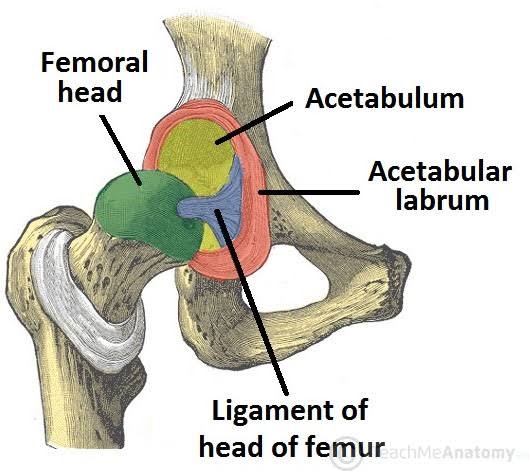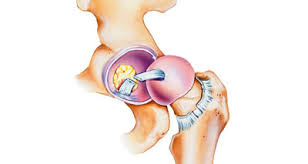Hip labral and ligamentum teres tears - Fact Sheet
What is a hip labral and ligamentum teres tear ?
The hip joint is made up of the femoral head (a ball shape) and the acetabulum (the joint’s socket). This joint is deepened by a labrum (a sort-of joint covering) and stabilised with numerous ligaments, including the ligament of the head of the femur, or ligamentum teres. Tears of these structures can lead to hip instability, when there is uncontrolled gliding of the hip joint during movement, which puts pressure on the supporting structures of the hip, causing irritation and pain.
What causes it?
Labral or ligamentum teres tears usually occur as a result of a trauma or injury of the hip. This can be common in jumping sports such as football, basketball, netball and gymnastics, or in people who have been involved in car accidents.

Signs and Symptoms of hip labral and ligamentum teres tears ?
• Anterior hip pain, mostly with certain movements such as bending, or twisting on the hips
• Groin pain
• Clicking hips, with the click being felt at the anterior hip
• Periods of anterior hip irritation, particularly if the joint has been stressed repetitively (e.g. doing repeated squats)
• Poor lifting technique and hip control with movements such as squats
• Prolonged sitting
.
.

Treatment of hip labral and ligamentum teres tears?
Activity modification – avoid or modify activities that flare up your hip pain – change the height of your seat at work, avoid deep squatting at the gym, or use a mirror for feedback to ensure your hips are remaining steady through this movement. This will ensure that you keep any hip pain at bay whilst you strengthen up the stabilising muscles of the hips!
Referral – referral to a specialist hip surgeon is generally indicated for symptomatic hip labral or lig. Teres tears, to help repair the area. This, combined with some physiotherapy/exercise physiology led exercises, has the best outcomes long-term.
Tailored Clinical Exercise will help to strengthen the deep gluteal muscles which help provide a suction effect on the hip joint. This improves the glide of the femoral head (the ball) in the acetabulum (the socket), reducing any pressure on the other sensitive structures of the hip. This will help prepare you for any hip surgery (pre-habilitiation), can help reduce any pain associated with hip instability, and improve your long-term recovery!



